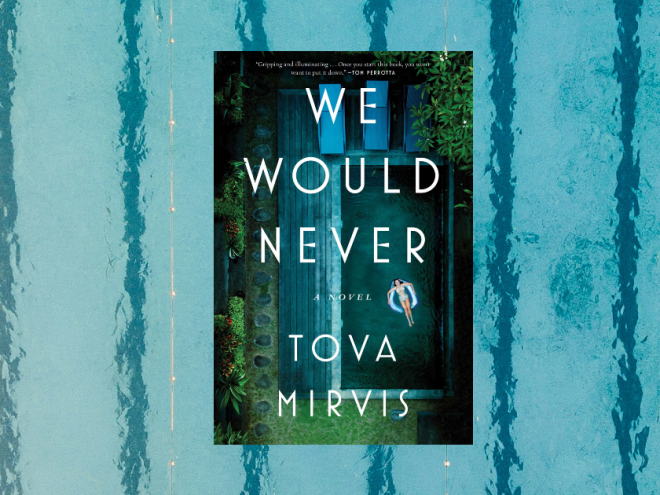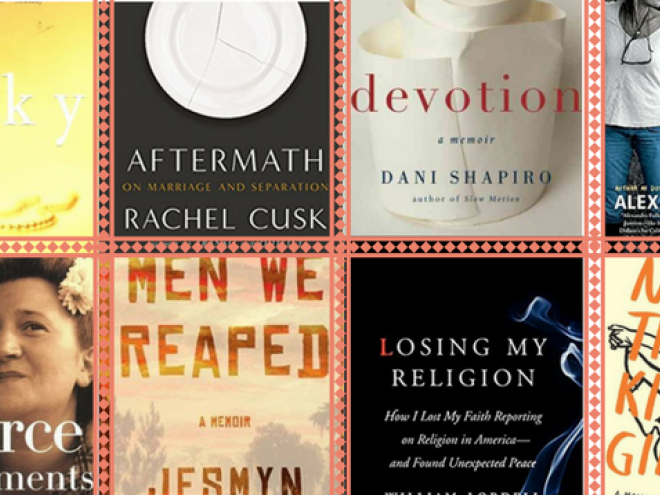Earlier this week, Tova Mirvis wrote about the parts of New York that are buried out of sight and how that relates to her fiction and how both novelists and voyeurs watch other people, trying to uncover the hidden parts of their lives. Her newest novel, Visible City, will be published by Houghton Mifflin Harcourt on March 18th. She has been blogging here all week for Jewish Book Council and MyJewishLearning.
 How is this book different from all your other books?
How is this book different from all your other books?
The most obvious answer: in Visible City, there are no description of Shabbat or shul, little grappling with religion and community. My other novels, The Ladies Auxiliary and The Outside World, were clearly Jewish novels. My subject matter was steeped in questions of Jewish belonging and identity, belief and doubt. In the ongoing panel discussion debates about who is or isn’t a Jewish writer, I always felt comfortable saying I was certainly one. I didn’t feel the label as limiting, didn’t think it prescribed me in any way, but it did describe the place I was writing from, the world from which my imagination sprung.
There was no clear cut choice then, back when I was writing my first two books, to write a specifically Jewish novel. I wrote from what moved me, preoccupied me, fascinated me. I wrote out of my own grappling with my Orthodox Jewish community, a world which has shaped so much of who I am. My Jewish self has always been inextricable from my writing self.
And then here too, when I started writing Visible City, there was no explicit decision to write a different kind of book, no moment when I decided I was going to write a book with less Jewish content. I started Visible City without being sure where I was going. Each piece led me to the next, one interest kindling another, one character creating the need for another. There were Jewish parts that I arrived at along the way – one character was raised Orthodox but no longer is and this leave-taking impacts the choices he makes in the novel. Throughout the book, many of my characters are Jewish, though this isn’t mentioned explicitly. (Academics, lawyers and therapists on the Upper West Side. You don’t need to tell us that they are Jewish. We know! Said one of my early readers.)
For a time, I thought that the book would round some bend, become more specifically Jewish. But as the months and then the years of writing went by, the book continued to take me in different directions. Every book is a surprise, to the writer as much as to the reader. I arrived at underground explorers, historical preservation. I arrived at stained glass windows, an art form I’d always associated with churches and which I was little interested in. But now, I fell in love: the abundance of color, the intricacy of the work, the varying colors illuminated depending on how the light shines through.
In a novel too, there are the parts that more easily catch the light, parts that are less clearly evident. Even in a novel that is ostensibly about other things, where my Jewish identity and interests are less prominent, I feel the Jewish part of myself present here as well.
In particular, I see it here in my interest in the way the individual relates to the group, in the way we shape ourselves to match outside expectations. But more than that, on the instinctive gut level from which writers write, my Jewishness is part of everything I write. It’s entrenched inside me, a permanent part of my eye even as I look out at other worlds. All of us, we write from the mix of shapes and colors inside us, the mosaic of our personal and family histories, from our own experiences and from the experiences that live in our imaginations. Like the stained glass windows I’ve come to love, a novel is an assemblage of blazing colors, the individual pieces of who we are visible at different times, depending on the light.
Tova Mirvis is the author of three novels, Visible City, The Outside World and The Ladies Auxiliary, which was a national bestseller. Her essays have appeared in various anthologies and newspapers including The New York Times, The Boston Globe Magazine, and Poets and Writers, and her fiction has been broadcast on National Public Radio. She lives in Newton, MA with her three children. Visit her website here.
Related Content: Essays: On Writing Jewish Literature and Being a Jewish Writer
Tova Mirvis is the author of the memoir The Book of Separation as well as four novels, We Would Never, Visible City, The Outside World, and The Ladies Auxiliary, which was a national bestseller. Her essays have appeared in various newspapers including The New York Times Book Review, The Boston Globe Magazine, and Poets and Writers, and her fiction has been broadcast on NPR. She lives in Newton, Massachusetts, with her family. You can connect with her on her website, TovaMirvis.com.



